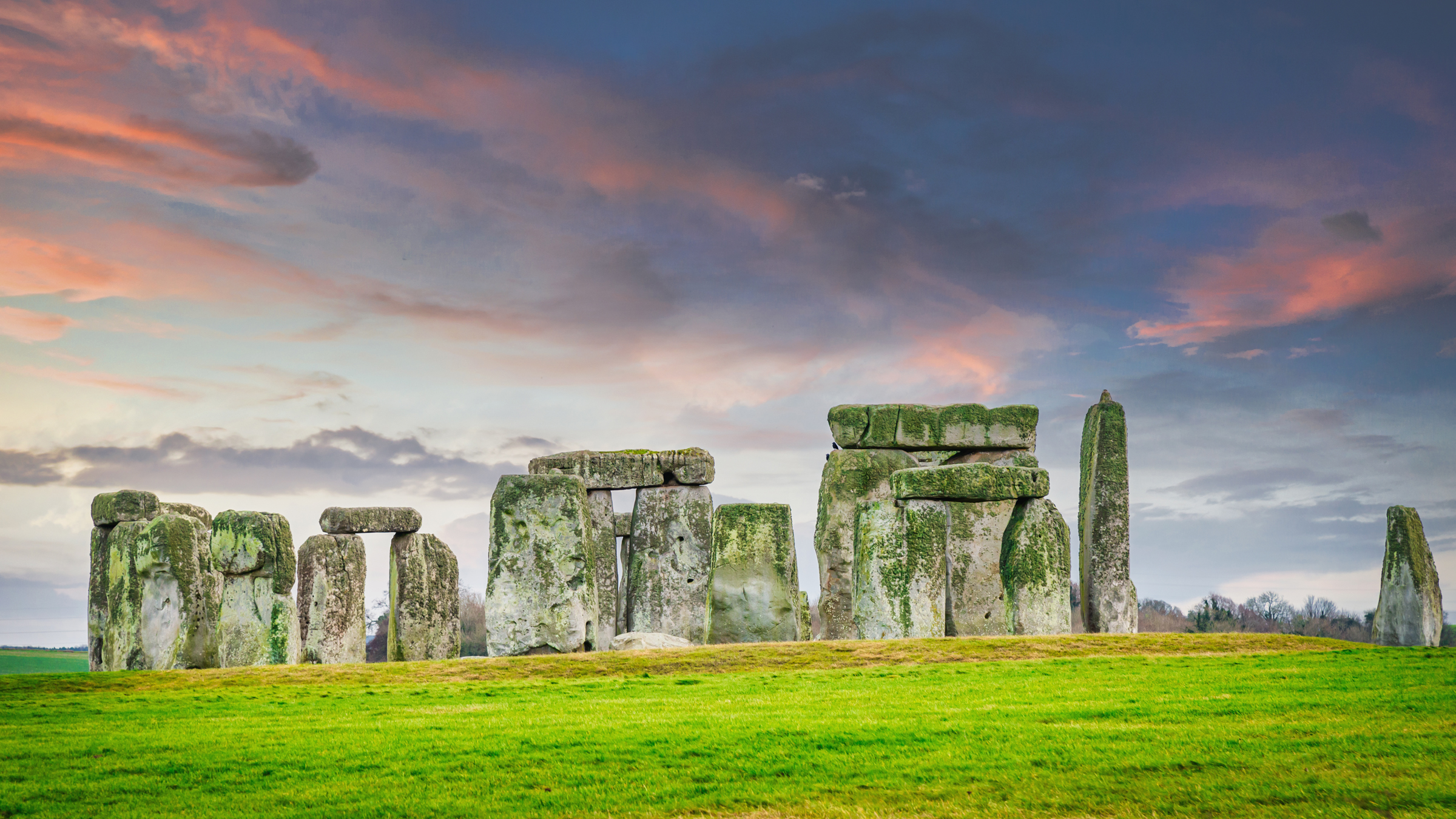Did druids build Stonehenge?
After all, modern druids gather at Stonehenge on the solstices.

Stonehenge is one of the world's most iconic, and mysterious, prehistoric monuments, and it has intrigued people for thousands of years. Scholars are still unsure exactly who built it and why, though many believe it was a religious site. Its circular layout aligns with the movements of the sun. But did the equally mysterious druids — the ancient "mediators between humans and the gods" build Stonehenge?
The short answer is no, they probably didn't. Archaeological work indicates that Stonehenge was constructed between roughly 4,000 and 5,000 years ago, while the earliest surviving written record of the druids dates back about 2,400 years. It's possible that the druids may go back somewhat further, but experts doubt they were around when Stonehenge was being built.
"Druids only emerge in the last half of the 1st millennium B.C.," long after Stonehenge was built, Caroline Malone, an emeritus professor of prehistory at Queen's University Belfast's School of Natural and Built Environment, told Live Science in an email. "No druidic evidence has ever been identified at Stonehenge, where instead, we have complex calendrical rituals associated with solstice, death, rebirth and community events," Malone noted, adding that "The Druids did not apparently worship the sun or solstice, and none of the Iron Age ritual sites suggest such activity or ritual."
Related: Why was Stonehenge built?
There is no evidence linking druids to stone circles. "Classical authors referred to ancient druids worshipping only in wooded groves — there is no mention of any link between druids and stone [monuments] let alone Stonehenge," Mike Parker Pearson, a professor of British later prehistory at University College London, wrote in an article published in 2013 in the journal Archaeology International.
This may seem surprising, as modern-day druids identify with Stonehenge, and many visit the site on the solstices. However, the druids who exist today don't necessarily follow the same practices as the ancient druids did. The ancient druids disappeared about 1,200 years ago, during the Middle Ages, while a revival movement didn't occur until about 300 years ago.
So why are druids associated with Stonehenge, if there is no evidence linking them with the site?
Sign up for the Live Science daily newsletter now
Get the world’s most fascinating discoveries delivered straight to your inbox.
"The reason why Druids are associated with Stonehenge is that they are the pagan priesthood of Britain when [written records appear] and so, when it was realised that the monument was built by the prehistoric British, in the 18th century, it was assumed that the Druids were responsible for it," Ronald Hutton, a history professor at the University of Bristol in the United Kingdom, told Live Science in an email. "Only in the 1960s did the public become generally aware, after further advances in archaeology, that it had been built two and a half thousand years before the time at which the Druids are recorded in ancient sources," Hutton said.
Some of the people involved with the revival of druidism, more than 300 years ago, were also involved with the study of Stonehenge and wanted to make it an important place of worship for the revived druids. "Stonehenge has long been linked with the reinvented druids — antiquaries such as John Aubrey and especially William Stukeley were central to that movement in the seventeenth century and they saw Stonehenge as the main shrine / temple for the new movement," Timothy Darvill, an archaeology professor at Bournemouth University in the United Kingdom, told Live Science in an email.
Demand from publishers also played a role in linking the druids to Stonehenge. Stukeley, who studied Stonehenge and other stone circles, "failed to find a publisher for his serious books on the henge monuments," Malone noted. "So he revved up the story, brought in Druids, which he felt were old enough to be Pre-Roman" wrote Malone, noting that this encouraged publishers to print his books, including his 1740 study of Stonehenge called "Stonehenge: A Temple Restor'd to the British Druids" — something that today we know is probably not true.
Originally published on Live Science.

Owen Jarus is a regular contributor to Live Science who writes about archaeology and humans' past. He has also written for The Independent (UK), The Canadian Press (CP) and The Associated Press (AP), among others. Owen has a bachelor of arts degree from the University of Toronto and a journalism degree from Ryerson University.









